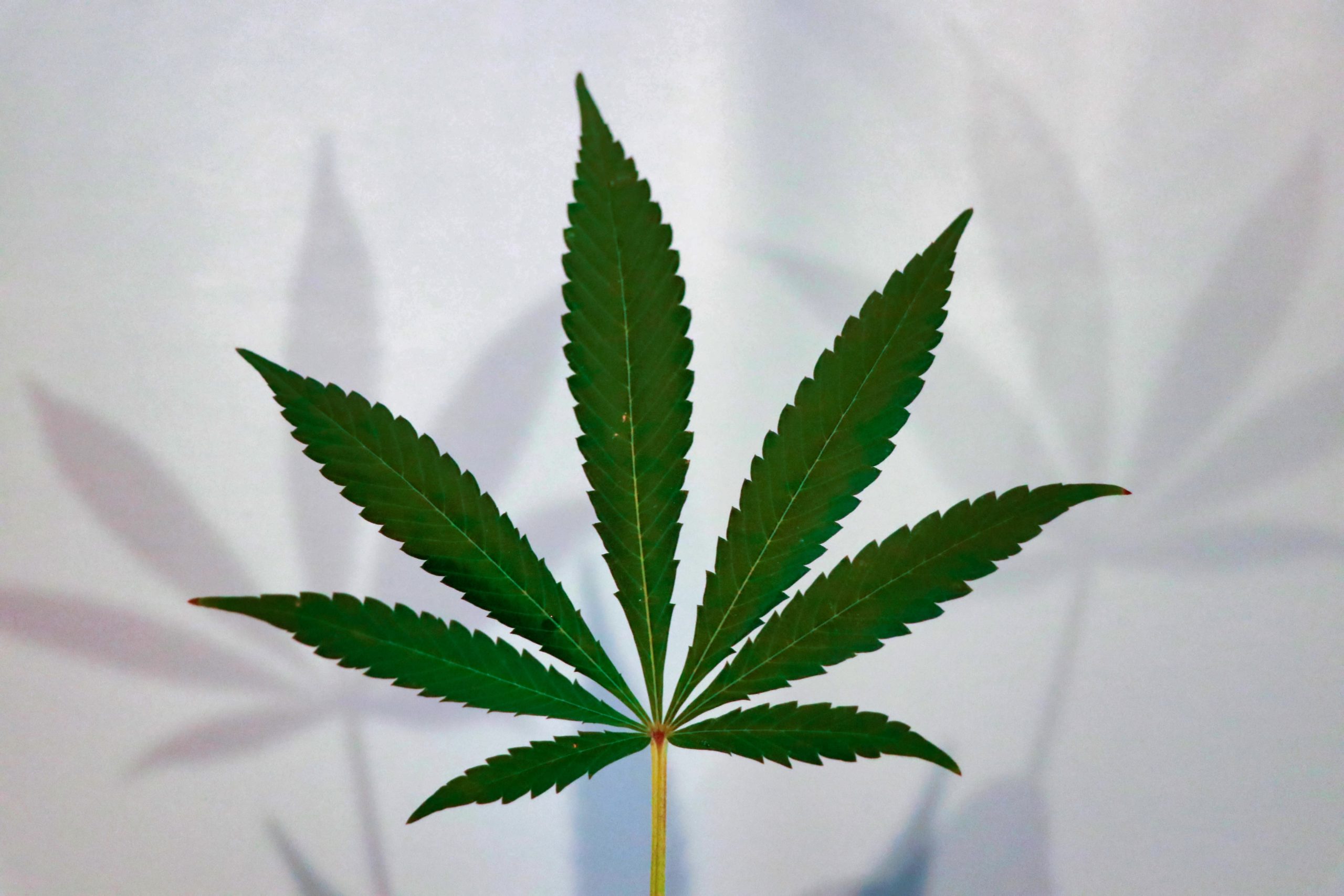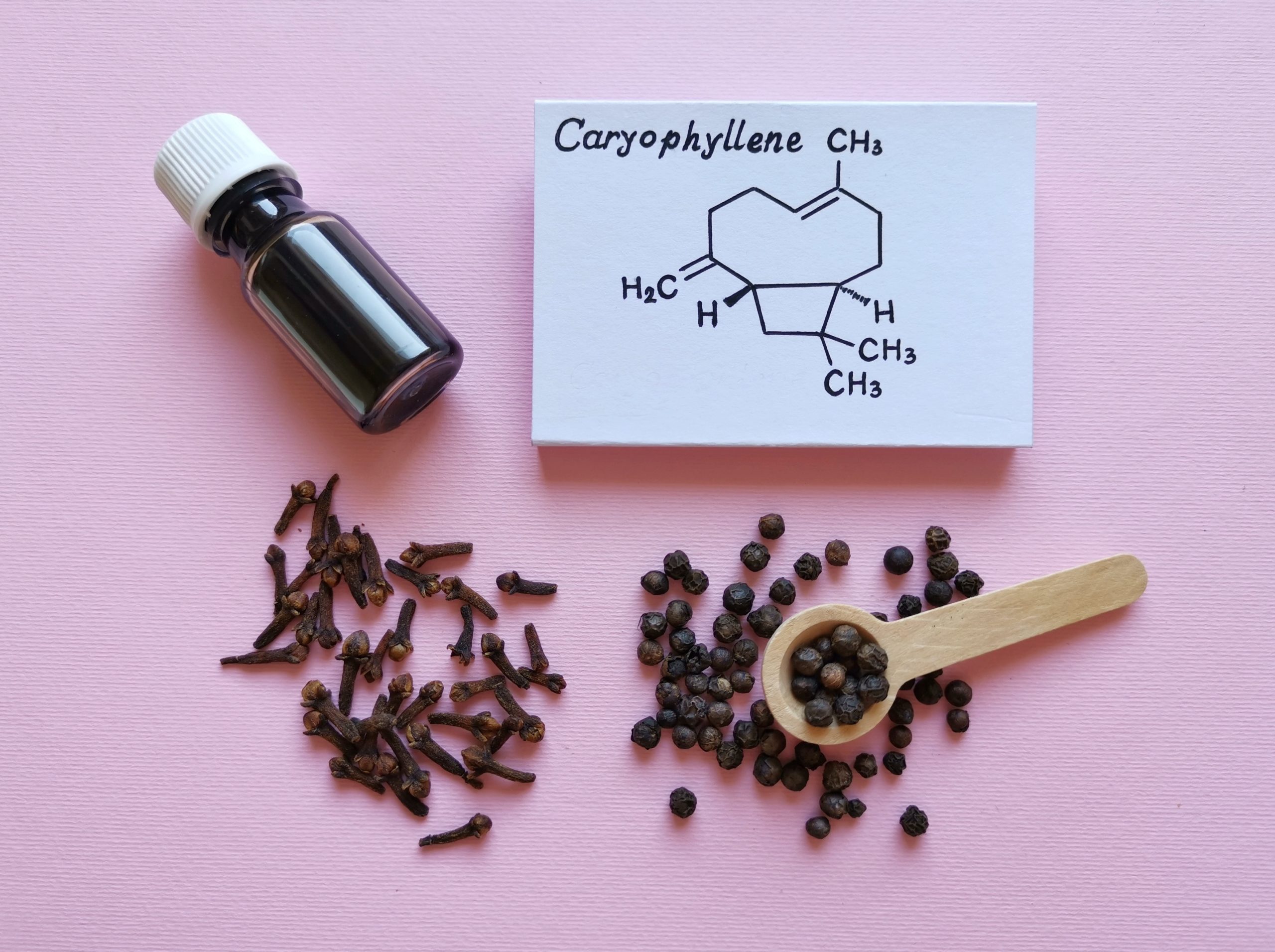Cannabis for Pain Relief: What Does Science Say?
Believe it or not, pain relief is the most common reason people seek cannabis! A 2019 study published in Health Affairs showed 62% of medical cannabis patients are looking to ease their chronic pain.
“We now know that chronic pain is indeed the most common qualifying condition for which people obtained medical cannabis licenses. Given the context of the opioid epidemic and the consistent observational studies that report medical cannabis patients substituting cannabis for pain medications, we now have a better sense of how widespread that practice and rationale may be,” said the study’s lead author, Kevin Boehnke, PhD.

Cannabis and the opioid crisis
It’s no wonder why people are putting down the pills and picking up the hippie green plant instead. When it comes to abusing opioids, there’s a common justification: “My doctor prescribed me this medication. Therefore, I am not addicted.” It’s an easy lie to believe because your doctor did prescribe you that pill. Why would they give you something that could hurt you?
It’s important to keep in mind, just because something is prescribed to you by a physician, doesn’t mean it comes without risks. Check out some of these sobering statistics from the U.S. Department of Health and Human Services about opioid misuse:
- In 2019, it’s estimated that 10.1 million people aged 12 years or older misused opioids over the prior year. Specifically, 9.7 million Americans misused prescription pain relievers, while the remaining 745,000 people used heroin.
- More than 760,000 Americans have died since 1999 from a drug overdose. Two out of three overdose deaths in 2018 involved an opioid.
- The national rate of opioid-related hospitalizations was 297 per 100,000 population in 2016.

Can I overdose on cannabis?
Currently, cannabis has not been proven to be the cause of any fatal overdose.
This set of parents, for example, tragically lost their 22-year-old son unexpectedly. They firmly believe cannabis was responsible for their son’s death, as it was found in his system when he died and he was an advocate for the plant. Despite this belief, the examiner who conducted his autopsy concluded cannabis did not cause his death, and doesn’t list it as the cause of death on his death certificate. While experts might point out other side effects to watch out for after consuming cannabis, such as paranoia, racing heart, potentially distorted vision, etc., nearly all of them agree that overdosing on cannabis just isn’t possible. This pair of grieving parents, unfortunately, did lose their son to a heart attack, according to the examiner.

What does science say about cannabis for pain relief?
So far, the FDA has not approved cannabis to cure or treat any disease, and that includes chronic pain. With that being said, there is an enormous amount of research and anecdotal testimonies that support cannabis for pain relief. This research sparked the installation of medical cannabis programs in over half the country, with surely more to follow! In terms of credible research rooted in scientific processes, here’s what we know about cannabis and pain so far:
- A 2016 research paper discovered cancer patients used 64% fewer opioids for cancer-related pain when medical cannabis was integrated into their routine.
- This piece of research also notes:
- Cannabis consumption was associated with a better quality of life in patients with chronic pain
- Cannabis came with fewer side effects and medications used
- This piece of research also notes:
- Harvard University says cannabis seems to ease the pain associated with multiple sclerosis, as well as general nerve pain.
- This 2015 review exploring cannabis to relieve pain found several of the conducted trials yielded positive results. The trials focused on patients with chronic pain, neuropathic pain, and multiple sclerosis. “Marijuana or cannabinoids may be efficacious for these indications,” reads the study.
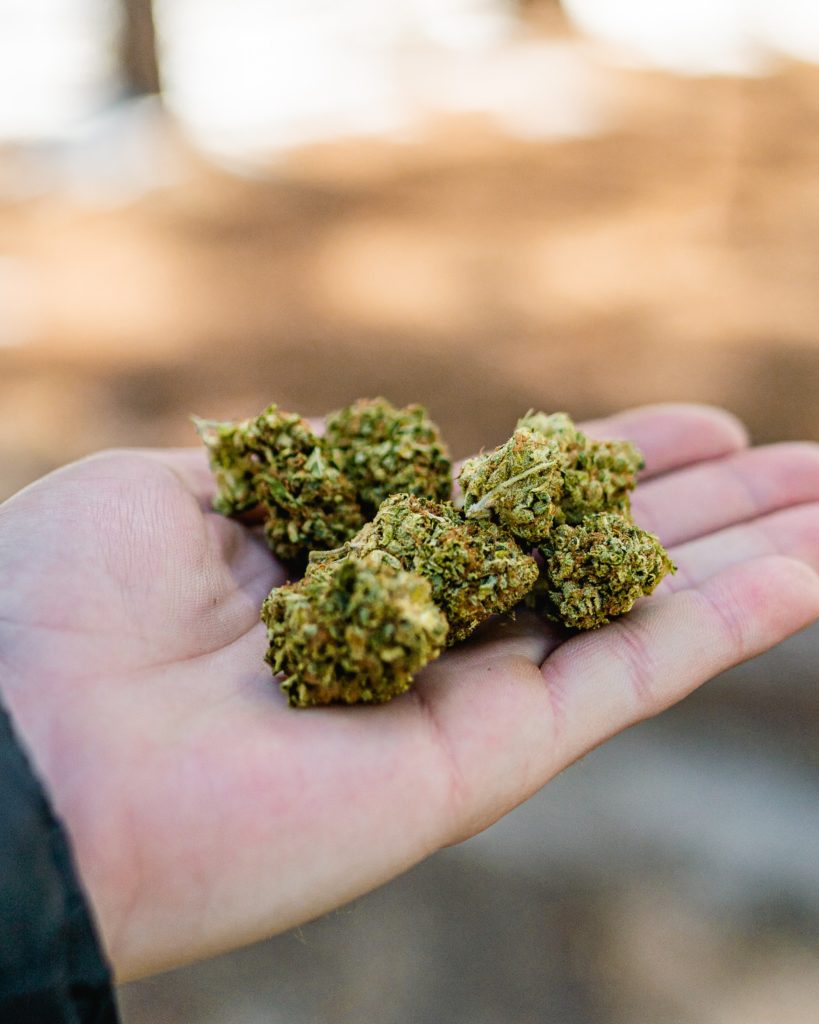
How does cannabis for pain relief work?
Let’s first talk about cannabinoids like the above study briefly mentioned. Cannabinoids are compounds found in the cannabis plant; there are over 100 known ones, but you might know the most popular ones as CBD and THC. To keep it simple, THC is the compound responsible for creating a high. CBD won’t intoxicate you, but it’ll give you a lot of the same benefits THC does!
Once these cannabinoids enter the body, they meet something called the endocannabinoid system. The endocannabinoid system is a biological system every human being has. The endocannabinoid system is equipped with receptors, CB1 and CB2 receptors to be specific, and they interact with cannabinoids like THC and CBD.
THC fits the CB1 receptor perfectly. You’ll find heavily concentrated areas of the CB1 receptors in the brain stem, spinal cord, nervous system, and other parts of the body. The CB2 receptor engages a lot with CBD, but they don’t directly fit each other like CB1 and THC. Find CB2 receptors in our vital organs, immune cells, the brain, our skin, digestive system, and more.

The endocannabinoid system continued
Experts believe the endocannabinoid system is responsible for bringing our body to homeostasis and restoring balance in the areas where we need it the most. That’s why you hear people recommending cannabis for so many different issues: because we have endocannabinoid receptors in basically every part of our body! Cannabinoids are a direct target to those receptors.
Don’t believe us? We don’t blame you, because you haven’t heard much about the endocannabinoid system. Modern medicine doesn’t talk about it, much less make it a part of their treatment plan. However, universities like UCLA have even devoted an entire research initiative to the endocannabinoid system, with plenty of content to learn from already! We also mentioned Harvard’s opinion on cannabis for pain relief in the above section highlighting credible pieces of research. So yes, the endocannabinoid system exists and there’s thorough research to prove it!
But no, you probably won’t hear about it from your doctor unless you ask. That’s not necessarily the doctor’s fault, though. Cannabis is still federally illegal to this day, despite over half the country legalizing it in some fashion. This makes things infinitely harder for physicians, whether it’s a professional stigma or they simply don’t have the necessary research that federal funding would be able to provide.

How do I consume cannabis for pain relief?
This is a great question, because there isn’t just one answer! Typically, when people (new consumers) think of cannabis, they think of smoking it. Thankfully, that’s not the only way to get your daily dose of cannabinoids. Smoking isn’t ideal for people with asthma or those who are uncomfortable inhaling smoke. Cannabis is versatile, so the way you consume it can be, too! Here are some of the best ways to try it if you don’t want to smoke:
- Grab an infused-bite from award-winning edibles company, incredibles
- Use a topical! Cannabis-infused topical products target the endocannabinoid receptors in our skin to offer direct relief for pain, like this fast-acting Extra Strength Salve from Quiq.
- Try a CBD product. Hemp-derived products like this chocolate bar from trupura CBD are a great option for people who don’t want to consume THC!

Explore different types of pain relief and shop online through Medically Correct! We always recommend consulting with an educated physician who knows your medical history before proceeding. Consider speaking with a licensed, cannabis-trained nurse at Leaf411 for a free evaluation.
Cannabis and Older Adults: Finding Your Ideal Solution Among Today's Product Selection
Senior citizens looking to improve their quality of life are making a beeline for the marijuana dispensaries!
Older adults over age 60 are among the fastest-growing group of cannabis consumers in the United States. A study published in the Journal of the American Medical Association found only 0.4% of adults age 65 and older reported using cannabis products between 2005-2006. By 2015, that percentage doubled and then doubled again in 2018 to nearly 4.2%.
The continued rise in elderly patients who are ‘cannacurious’ means there’s an even bigger need for good educational resources. With the correct information, older adults can feel more confident and safe when deciding to include medical marijuana into their lifestyle.
How Has Cannabis Changed Over the Years?
Interest in medical marijuana has increased thanks to reduced stigma, state legalizations, and newly discovered research on the benefits of cannabis for specific conditions primarily afflicting elderly patients. Some older adults enjoy cannabis recreationally to help them stay physically active. Many more use medical marijuana and CBD for chronic pain, sleeping problems, and mental health conditions like anxiety and depression.
Looking back, we see just how much cannabis has changed from the ‘60s and ‘70s compared to today’s market. No more kilo bricks and meeting behind the school to toke up before class. Cannabis consumption has transcended beyond the average stoner. Not only has the flower become more potent, but experts say there are over 700 unique cannabis strains!
Probably the most crucial aspect that has changed is the rigorous lab testing required for all medical and recreational marijuana products. Consumer safety is one of the biggest factors for every cannabis business and dispensary. The industry as a whole is still relatively new, and regulations vary from state to state. Lab testing ensures all cannabis products being placed on the market are of high quality and contain no residual contaminants, such as pesticides or heavy metals.
Testing also helps determine the potency and terpene profile to ensure safe consumer experiences. Terpenoids are the aromatic oils found on the plant. These molecules are also responsible for the flavor you will taste whether you smoke flower, concentrates, or vape, and influence the effect of the product.
What Cannabis Products Work Best for Older Adults?
It’s your first trip to the dispensary, and what do you see? Options upon options. How do you know what will work best?
Walking into a dispensary can be overwhelming and intimidating. Seeing all the various products and the scores of young patients might have you wondering if cannabis is right for you. Rest assured, you’re not alone in your thoughts. That’s why having the right knowledge is essential to make sure you have the best experience possible.
The dispensary workers are trained to understand the differences, benefits, and disadvantages of every cannabis product sold in-store. Here’s a summary of the options many older patients choose to try:
- Edibles - Cannabis edibles are foods or drinks infused with THC and/or CBD that let you enjoy the effects of marijuana without needing to smoke or vape. Edible gummies and chocolate are popular choices for older patients because they’re easy to consume and discreet.
It can take 30 minutes to two hours for the effects to kick in versus the immediate effects of smoking marijuana, but one edible can last you almost an entire day without needing another dose! The most common phrase you’ll hear for first-time cannabis users is, “start low, go slow.” Edibles with 2.5mg of THC are a recommended starting point for first-time cannabis users
- Topicals - Cannabis-infused balms, lotions, and oils offer the therapeutic benefits of marijuana without the high. Topicals are the most popular choice for localized pain relief, soreness, and inflammation. Some evidence shows they may even help with psoriasis, dermatitis, and arthritis.
- Patches - Transdermal patches are akin to nicotine patches, but instead, you’re getting a slow release of cannabinoids, the active ingredients found in cannabis. Along with their convenience, some patches will work for over 12 hours and up to 96 hours!
- Tinctures - Tinctures are liquid cannabis extracts that contain high levels of terpenes and cannabinoids. They can be applied under the tongue or mixed in with foods and drinks. Tinctures are fast-acting and are delivered using a dropper for easy dosing.
What Are the Potential Risks for Seniors Using Cannabis?
Just like with any other medicine, there are potential risks and harmful side effects from using cannabis. Impairments with attention span, motor coordination, and verbal memory can be amplified in older patients with preexisting brain impairments and struggle with pulmonary and cardiovascular conditions. Other seniors reported experiencing dizziness and fatigue. Some studies show it could also be harmful to those who recently had a heart attack.
Another point to consider is how cannabis interacts with other medications. It may cause certain medicines to stop working or lead to an increase in their side effects.
Change in marijuana itself from what it was in the ’60s and ’70s also makes others wary of trying it. The potency has gradually gotten much stronger, and some worry that older patients won’t take dosing seriously because they remember what it was like when they first tried weed.
However, many seniors have said these risks are avoidable by carefully dosing and monitoring your medication schedule. Cannabis has already become a suitable replacement to other pharmaceuticals for many older patients, especially those who were already experiencing adverse side effects from extended medication use.
Even with all the well-deserved recognition cannabis receives, you must always speak to your physician first before trying medical marijuana. Or, you can consult with Medically Correct’s nurse hotline partners at Leaf 411. This free cannabis hotline consists of trained nurses who provide education and directional support about legal cannabis use.
Cannabis Product Selections for Seniors Are Better Than Ever!
Older adults deserve well-crafted cannabis that suits their needs just as much as anyone else. Whether you’re a newcomer or are no stranger to the world of cannabis, Medically Correct offers a wide range of products from award-winning brands. Our edibles, vapes, topicals, and more are created by some of the top experts in the business.
We’re committed to supporting the health and wellness of our consumers, young and old!
What Are The Best Terpenes? Here's How To Experiment and Discover Your Perfect High
Ever wonder why you feel vastly different from various strains of cannabis, even if their THC and CBD content are the same? It’s the terpenes! As science continues to unveil the mysteries of cannabinoids, terpenes are gaining a lot of attention, and for good reason.
Since the early days of the cannabis industry, strains were primarily classified as Indica, Sativa, or Hybrid, labeled as such due to the common experiences of a body high, head high, or somewhere in between, respectively. Yet science is finding these classifications to be quite rudimentary and as terpenes are being analyzed further, what’s been revealed is that the role terpenes play within cannabis drive the experiences we humans receive, and that they’re critical components to the medicinal effects of cannabis.
Short refresher: Terpenes are the oily compounds within the cannabis trichomes that give the plant its smell and taste, similar to essential oils. (“Terpenoids” is often used interchangeably with “terpenes,” the main difference being that terpenes are hydrocarbons [carbon and hydrogen only] while terpenoids have been denatured by oxidation [chemical modification or drying and curing the flowers].
How would you like to be able to choose your ideal strain by identifying which terpenes are best for you? We’ll share with you how, so read on!

How to Dial in Your Ideal Cannabis Strain Based on its Terpene Profile
At this point in time, somewhere between 120 – 200 terpenes have been discovered within the cannabis plant and of these, a small handful have been researched. The findings are somewhat limited so far, but as research continues terpenes will become an even more precise way to identify your ideal strains.
For now, there is enough information to help guide you, and once you learn about the known potential therapeutic properties of each of the most common terpenes found in cannabis, you can start choosing strains based on how you’d like to feel.
Step 1: So, how do you want to feel? Determine this first so you know what you’re looking for as you learn about the most common terps. Here are some questions to help get you started:
- Are you looking to mellow out, yet stay clear headed and productive?
- Are you looking to relax your mind and body so you can fall asleep more easily?
- Are you looking for inflammation reduction and pain relief?
- Are you looking for something to energize and uplift your spirits?
- Are you looking to reduce anxiety?
- Are you looking for creative enhancement and focus?
Step 2: Determine your terpene preferences
A great place to start is reviewing a chart of the most common terpenes and where they reside on the spectrum of calming to energizing (see below). You can also perform an internet search of cannabis terpenes and gather information from various sources.
Step 3: Look up each terpene and learn about its known potential therapeutic benefits.
Step 4: Take note of the terpenes you’d like your cannabis to contain, then search for strains which contain these terpenes. Also identify terpenes you want to stay away from and keep a note of these in your wallet or commit them to memory.
Below are the most abundant terpenes in each of the following popular strains, with the highest amounts bolded.
Super Lemon Haze: terpinolene, caryophyllene, ocimene
Sour Diesel: caryophyllene, limonene, myrcene
Blue Dream: myrcene, pinene, caryophyllene
OG Kush: caryophyllene, limonene, myrcene, linalool, pinene, and humulene
Golden Goat: limonene, caryophyllene, myrcene, pinene
Here’s an example: Let’s say you are looking for help with relieving pain and inflammation while reducing anxiety. Caryophyllene reduces inflammation which lessens pain and limonene helps reduce anxiety. From the list above, OG Kush and Sour Diesel would be the top two strains for you to try.
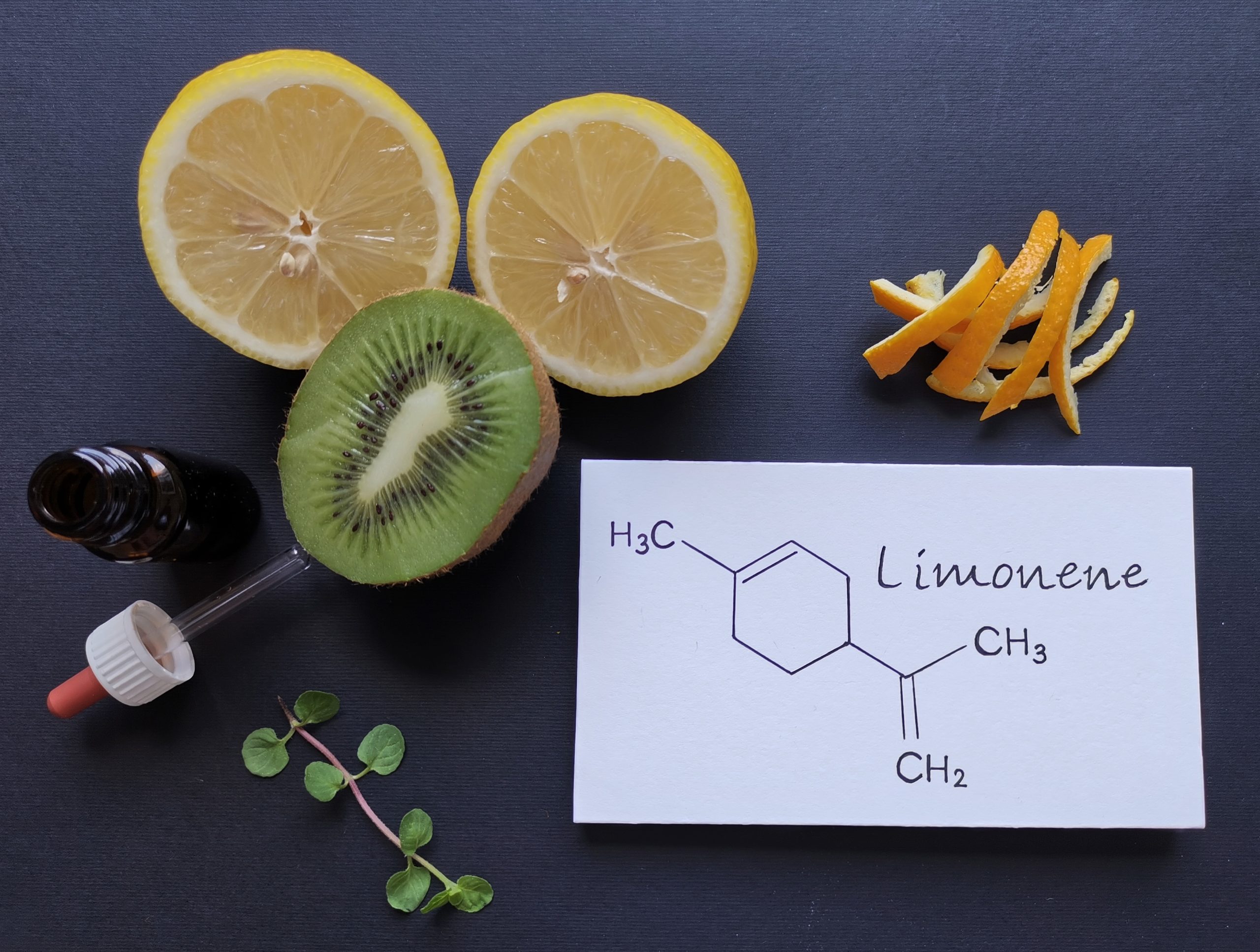
A More Experiential Way To Discover The Best Terpenes for You
This way can be super fun. Simply head over to your favorite dispensary and purchase a gram of each of the following: Super Lemon Haze, Sour Diesel, Blue Dream, Golden Goat, OG Kush (or you can choose your own lineup)
Next, grab some index cards (or download/print this worksheet) and smoke each one on separate days or with enough time in between so they don’t influence one another, such as one in the morning and one in the evening. For each strain, after 10-15 minutes from consumption, take this super short quiz and keep your answers to refer to later:
- Now that you’re high, what are the top three things you feel like doing?
- Which would you rather be: comfy at home or out socializing (circle one)
- Do you enjoy this strain? Yes or No (circle one)
Once you have your answers for each strain, list out the terpenes in each. You can refer to the strain examples/main terpene profiles above or if you chose other strains, consult a resource such as Leafly.com. See what trends you find within the strains you enjoy and the ones you don’t, then learn more about those terpenes so they can help guide your future buying decisions.
Fun, right? With the endless combinations and ratios of terpenes, the future of highly intelligent cannabis cultivation lies here…and there’s so much more to be revealed as research continues. We’re only at the beginning.
Check out our first blog post regarding Terpenes here.

Cannabis and Yoga: An Essential Guide To Combining Cannabis Products with Your Practice
Whether you’re a cannabis consumer, a yoga practitioner, or both, this guide will shed light on how to combine cannabis and yoga for an elevated, mindful practice. Let’s dive in!
The word yoga may conjure up an image of someone performing physical postures on a sticky mat. This is simply one way to practice yoga, called yoga asana. If you aren’t already aware, the practice of yoga has many different forms, and ultimately, it’s a practice of unification which brings the practitioner into an innate state of balance, cultivating a space where the mind, body, and breath are fully integrated with the spirit/seer – all in the same moment. Perception shifts from the lens of the ego to the lens of the higher self. This state of oneness is a direct experience of life revealing separateness as an obvious illusion.
Cannabis, along with many other sacred plants, is a tool that can offer the experience of this very same state of being. As science has shown, cannabis activates our endocannabinoid system, the system within the body that maintains homeostasis – the state of balance. It also enhances all of our senses, giving us a heightened state of self-awareness, which is an effect of practicing yoga. This writer sees cannabis as one of the best yoga teachers on this planet!

What Kinds of Cannabis are Best to Practice With?
Since most strains are labeled as Indica, Sativa, or Hybrid, this can provide some direction. Yet while there are common experiences from various strains, which we’ll get into, effects do vary from person to person so it’s important to experiment to find out what you like the most.
As aforementioned, yoga is a practice bringing together mind and body, so it’s helpful to work with a hybrid strain rather than catapulting your attention fully into your head with a sativa strain or fully into your body with an indica strain.
- A sativa-dominant hybrid can be a great partner for Vinyasa and Power yoga style classes, such as Jack Herer, ACDC, and White Widow.
- An indica-dominant hybrid may be ideal for Restorative, Yin and meditation practices, such as OG Kush, White Diesel, and Lavender.
- If you really want to dial in your ideal strain, learn about terpenes and look for strains that contain the terpenes you wish to work with.
Edibles that have an equal ratio of THC to CBD are also wonderful cannabis companions for yoga since they help to offset an overabundance of heady energy. If you’re not looking for any psychoactive effects within your practice, stick to CBD, which for most people turns down the dials of anxiety and tension, allowing an easier cultivation of presence.
When & How Much to Consume
If you plan to consume right before practice, smoking or vaping creates an immediate onset. Smoking does produce potentially harmful carcinogens, so if you’d like to create minimal harm you can choose vaping either flower or concentrate. Concentrate is much more potent than flower, so keep that in mind when dosing.
If you’ve got some time before practice, choose an edible such as a pill, sublingual spray or tincture, gummy, or chocolate, to name a few. If you don’t have enough time to wait for it to kick in, take an edible that has a quick onset, or be aware that you’ll start feeling it at some point during your practice.
For anyone just starting out, I recommend a micro dose, 2.5mg. I’ve found the ideal dose for me is 2.5mg THC and 2.5mg CBD, which is just enough to help move my attention off the day’s distractions and send me on my way…the practice does the rest.
DO: Consume less than your typical dose. Less is more when bringing cannabis into your practice. Why? Yogic breathing creates a state of awareness that mimics the level of presence and heightened sensual state cannabis offers, so if you consume too much, it could be overload. When practicing alone, this can bring you into new frontiers of the mind-body connection you may enjoy exploring, yet if practicing with others, it could send you into a state of anxiety.
DON’T: Consume and practice with a full stomach. Aim for little to no food in your belly. Go for a smoothie or soup if you need something in your tummy. Digestion of food is a distraction to a yoga practice, which is only heightened when high.
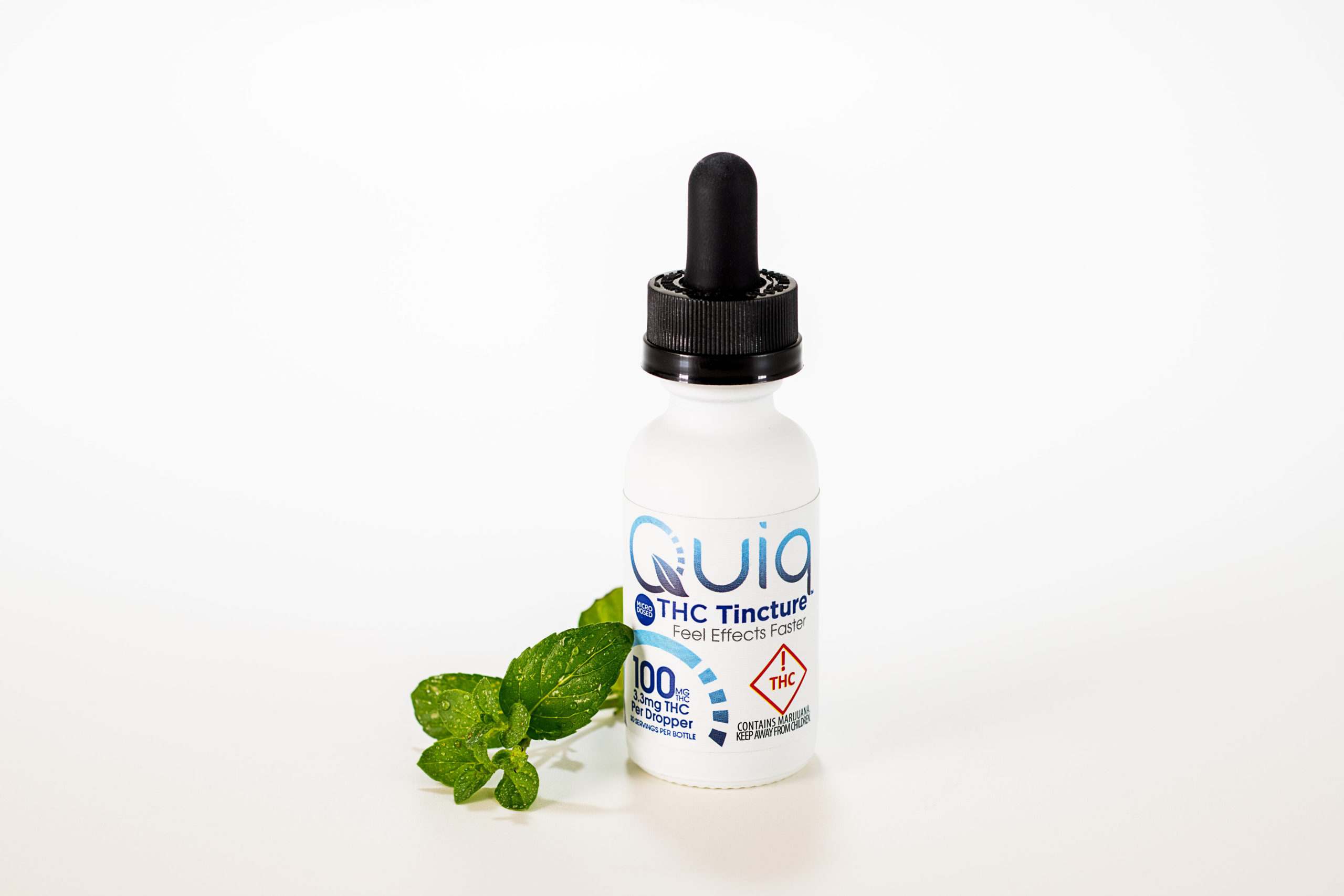
What Part of Yoga Practice Includes Cannabis?
This is entirely up to you. Most who combine yoga and cannabis consume prior to practice so that all parts of the practice are elevated by the plant. When it comes to the postures, a general rule of thumb is to stay away from poses that have a higher level of risk for injury, which will be different for everyone. For an average practitioner this includes handstand, headstand, and any other poses which require a lot of coordination, especially dropping back into wheel.
The effect of cannabis can enhance your innate state of oneness, so when it comes to meditation, you may find it easier to quiet the mind and drop into a meditative state, which is why many enjoy consuming and meditating.
CAUTION: Relying on any external substance to incite a state of being that is part of our true nature turns it into a crutch rather than a tool. Plus, cannabis has a tamasic effect on the mind and body, which in Ayurveda speaks to the dulling quality of something. Here’s a great article in the Yoga Journal that discusses more about this.
Integration is Key
It can be easy to rely on cannabis to practice yoga. If you’re not careful, you may find yourself resistant to practicing without it. It’s essential to give yourself several practice sessions without weed for every session you practice with it. Why? Integration.
During your cannabis-enhanced yoga practice, you’ll become aware of aspects of yourself you were once unaware of, such as how parts of your body relate to each other and patterns of thought within your mind. It’s important to practice feeling and recalling these things without the help of cannabis, because this integration helps fortify your nervous system to maintain this more optimal alignment on a regular basis.
Have fun with it and share your yoga and cannabis experience with us on Instagram by tagging @MedicallyCorrectLLC!
(Writer’s note: Be sure to talk with your doctor or health professional before beginning a physical yoga practice or introducing cannabis into your practice.)

